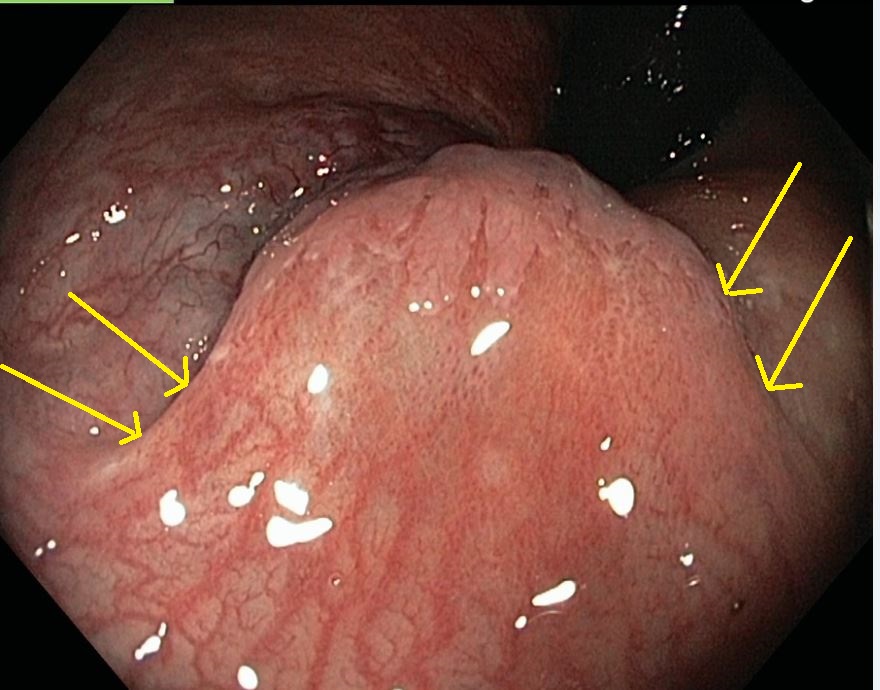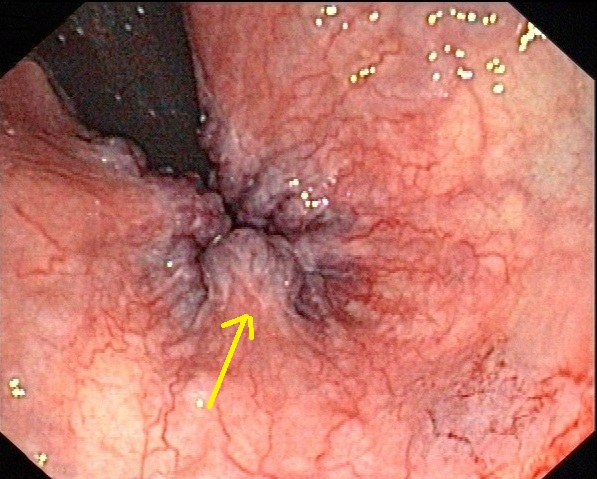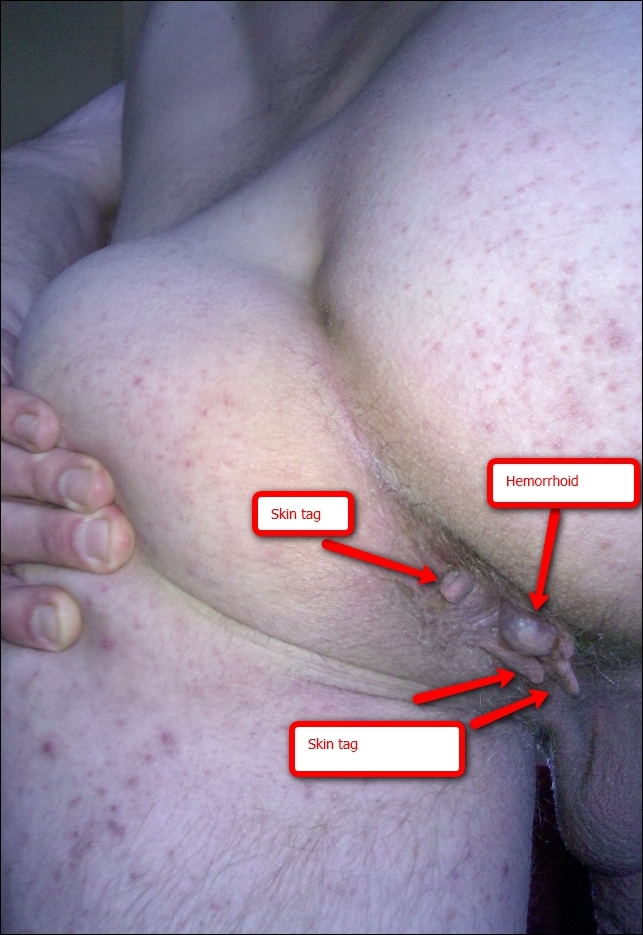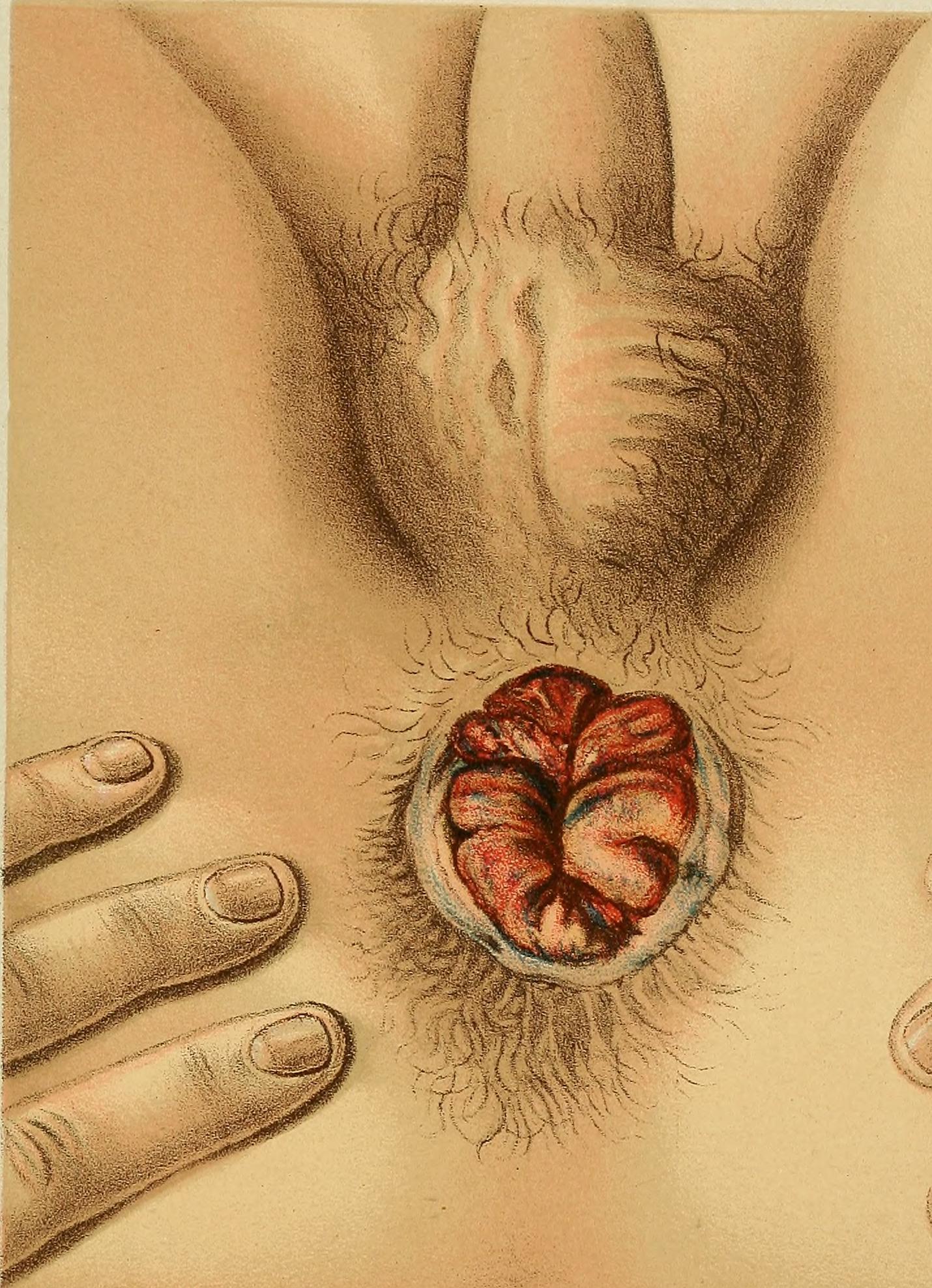Hemorrhoids pathophysiology: Difference between revisions
Jump to navigation
Jump to search
Ahmed Younes (talk | contribs) No edit summary |
Ahmed Younes (talk | contribs) No edit summary |
||
| Line 9: | Line 9: | ||
* Similarly, sitting for prolonged periods of time can cause hemorrhoids. | * Similarly, sitting for prolonged periods of time can cause hemorrhoids. | ||
* Portal hypertension can also cause hemorrhoids because of the connections between the portal vein and the [[vena cava]] which occur in the rectal wall - known as [[portocaval anastomoses]].<ref>{{cite web |title=Causes of Hemorrhoids |url=http://www.mayoclinic.com/health/hemorrhoids/DS00096/DSECTION=3 |date=Nov 28, 2006 |publisher=Mayo Clinic |accessdate=2007-12-07}}</ref> | * Portal hypertension can also cause hemorrhoids because of the connections between the portal vein and the [[vena cava]] which occur in the rectal wall - known as [[portocaval anastomoses]].<ref>{{cite web |title=Causes of Hemorrhoids |url=http://www.mayoclinic.com/health/hemorrhoids/DS00096/DSECTION=3 |date=Nov 28, 2006 |publisher=Mayo Clinic |accessdate=2007-12-07}}</ref> | ||
* Additional factors that can influence the course of hemorrhoids (mostly by increasing rectal vein pressure), especially for those with a genetic predisposition, are [[obesity]] and a [[sedentary lifestyle]].<ref name="pmid17074235">{{cite journal |vauthors=Huang YT |title=[Consideration on the pathogenesis of hemorrhoids] |language=Chinese |journal=Zhonghua Wai Ke Za Zhi |volume=44 |issue=15 |pages=1019–21 |year=2006 |pmid=17074235 |doi= |url=}}</ref> | * Additional factors that can influence the course of hemorrhoids (mostly by increasing rectal vein pressure), especially for those with a genetic predisposition, are [[obesity]] and a [[sedentary lifestyle]].<ref name="pmid17074235">{{cite journal |vauthors=Huang YT |title=[Consideration on the pathogenesis of hemorrhoids] |language=Chinese |journal=Zhonghua Wai Ke Za Zhi |volume=44 |issue=15 |pages=1019–21 |year=2006 |pmid=17074235 |doi= |url=}}</ref><ref name="pmid3265119">{{cite journal |vauthors=Le Quellec A, Bories P, Rochon JC, Garrigues JM, Poirier JL, Michel H |title=[Portal hypertension and hemorrhoids. Cause effect relationship?] |language=French |journal=Gastroenterol. Clin. Biol. |volume=12 |issue=8-9 |pages=646–8 |year=1988 |pmid=3265119 |doi= |url=}}</ref> | ||
* Increased straining during bowel movements, (e.g. [[constipation]], [[diarrhea]]) may lead to hemorrhoids. <ref name="titleHemorrhoids during pregnancy: Treatment options - MayoClinic.com">{{cite web |author=Harms R |title=Hemorrhoids during pregnancy: Treatment options |url=http://www.mayoclinic.com/health/hemorrhoids-during-pregnancy/AN01720 |date=Nov 3, 2007 |publisher=MayoClinic |accessdate=2007-11-28}}</ref> | * Increased straining during bowel movements, (e.g. [[constipation]], [[diarrhea]]) may lead to hemorrhoids. <ref name="titleHemorrhoids during pregnancy: Treatment options - MayoClinic.com">{{cite web |author=Harms R |title=Hemorrhoids during pregnancy: Treatment options |url=http://www.mayoclinic.com/health/hemorrhoids-during-pregnancy/AN01720 |date=Nov 3, 2007 |publisher=MayoClinic |accessdate=2007-11-28}}</ref> | ||
* [[Pregnancy]] causes hypertension and increases strain during bowel movements, and thus hemorrhoids are often associated with pregnancy. | * [[Pregnancy]] causes hypertension and increases strain during bowel movements, and thus hemorrhoids are often associated with pregnancy. | ||
Revision as of 20:41, 20 June 2017
|
Hemorrhoids Microchapters |
|
Diagnosis |
|---|
|
Treatment |
|
Case Studies |
|
Hemorrhoids pathophysiology On the Web |
|
American Roentgen Ray Society Images of Hemorrhoids pathophysiology |
|
Risk calculators and risk factors for Hemorrhoids pathophysiology |
Editor-In-Chief: C. Michael Gibson, M.S., M.D. [1]; Associate Editor(s)-in-Chief: Ahmed Younes M.B.B.CH [2]
Overview
Hemorrhoids are developed due to combination of genetic predisposition (weak rectal veins) and following certain diet and defecation habits.
Pathophysiology
- The pathophysiology of hemorrhoids includes genetic predisposition (weak rectal vein walls and/or valves), straining during bowel movements, and too much pressure on the rectal veins due to poor muscle tone or poor posture.[1]
- Similarly, sitting for prolonged periods of time can cause hemorrhoids.
- Portal hypertension can also cause hemorrhoids because of the connections between the portal vein and the vena cava which occur in the rectal wall - known as portocaval anastomoses.[2]
- Additional factors that can influence the course of hemorrhoids (mostly by increasing rectal vein pressure), especially for those with a genetic predisposition, are obesity and a sedentary lifestyle.[3][4]
- Increased straining during bowel movements, (e.g. constipation, diarrhea) may lead to hemorrhoids. [5]
- Pregnancy causes hypertension and increases strain during bowel movements, and thus hemorrhoids are often associated with pregnancy.
- Excessive consumption of alcohol or caffeine can both cause hemorrhoids.[6]
{{#ev:youtube|QKndv13bXHA}}
Food
- Dehydration can cause a hard stool or chronic constipation which can lead to hemorrhoidal irritation.[3]
- An excess of lactic acid in the stool, a product of excessive consumption of dairy products such as cheese, can cause irritation and a reduction of consumption can bring relief.
- Vitamin E deficiency is also a common cause.
- Food considered "probiotic", such as yogurt with active culture, may help keep the gut functioning normally and thus help prevent flare-ups, as will the consumption of fruit.
Use of unnatural "sitting" toilets
- Based on their very low incidence in the developing world, where people squat for bodily functions, hemorrhoids have been attributed to the use of the unnatural "sitting" toilet.[7][8]
- In 1987, an Israeli physician, Dr. Berko Sikirov, published a study testing this hypothesis by having hemorrhoid sufferers convert to squat toilets.[9] Eighteen of the 20 patients were completely relieved of their symptoms (pain and bleeding) with no recurrence, even 30 months after completion of the study.
- No follow-up studies have ever been published. The American Society of Colon & Rectal Surgeons is silent regarding the therapeutic value of squatting.
Gross pathology
- External hemorrhoids appear on inspection of the anal verge as skin tags or prolapsed veins either strangulated or free.
- Internal hemorrhoids appear as bluish bulging of the veins in the mucosa.
References
- ↑ Guttenplan M (2017). "The Evaluation and Office Management of Hemorrhoids for the Gastroenterologist". Curr Gastroenterol Rep. 19 (7): 30. doi:10.1007/s11894-017-0574-9. PMID 28567655.
- ↑ "Causes of Hemorrhoids". Mayo Clinic. Nov 28, 2006. Retrieved 2007-12-07.
- ↑ 3.0 3.1 Huang YT (2006). "[Consideration on the pathogenesis of hemorrhoids]". Zhonghua Wai Ke Za Zhi (in Chinese). 44 (15): 1019–21. PMID 17074235.
- ↑ Le Quellec A, Bories P, Rochon JC, Garrigues JM, Poirier JL, Michel H (1988). "[Portal hypertension and hemorrhoids. Cause effect relationship?]". Gastroenterol. Clin. Biol. (in French). 12 (8–9): 646–8. PMID 3265119.
- ↑ Harms R (Nov 3, 2007). "Hemorrhoids during pregnancy: Treatment options". MayoClinic. Retrieved 2007-11-28.
- ↑ Burney RE (November 2005). "Hemorrhoids". University of Michigan Health System. Retrieved 2007-11-28.
- ↑ Sikirov BA (1989). "Primary constipation: an underlying mechanism". Med. Hypotheses. 28 (2): 71–3. PMID 2927355.
- ↑ Sikirov D (2003). "Comparison of straining during defecation in three positions: results and implications for human health". Dig. Dis. Sci. 48 (7): 1201–5. PMID 12870773.
- ↑ Sikirov BA (1987). "Management of hemorrhoids: a new approach". Isr. J. Med. Sci. 23 (4): 284–6. PMID 3623887.



